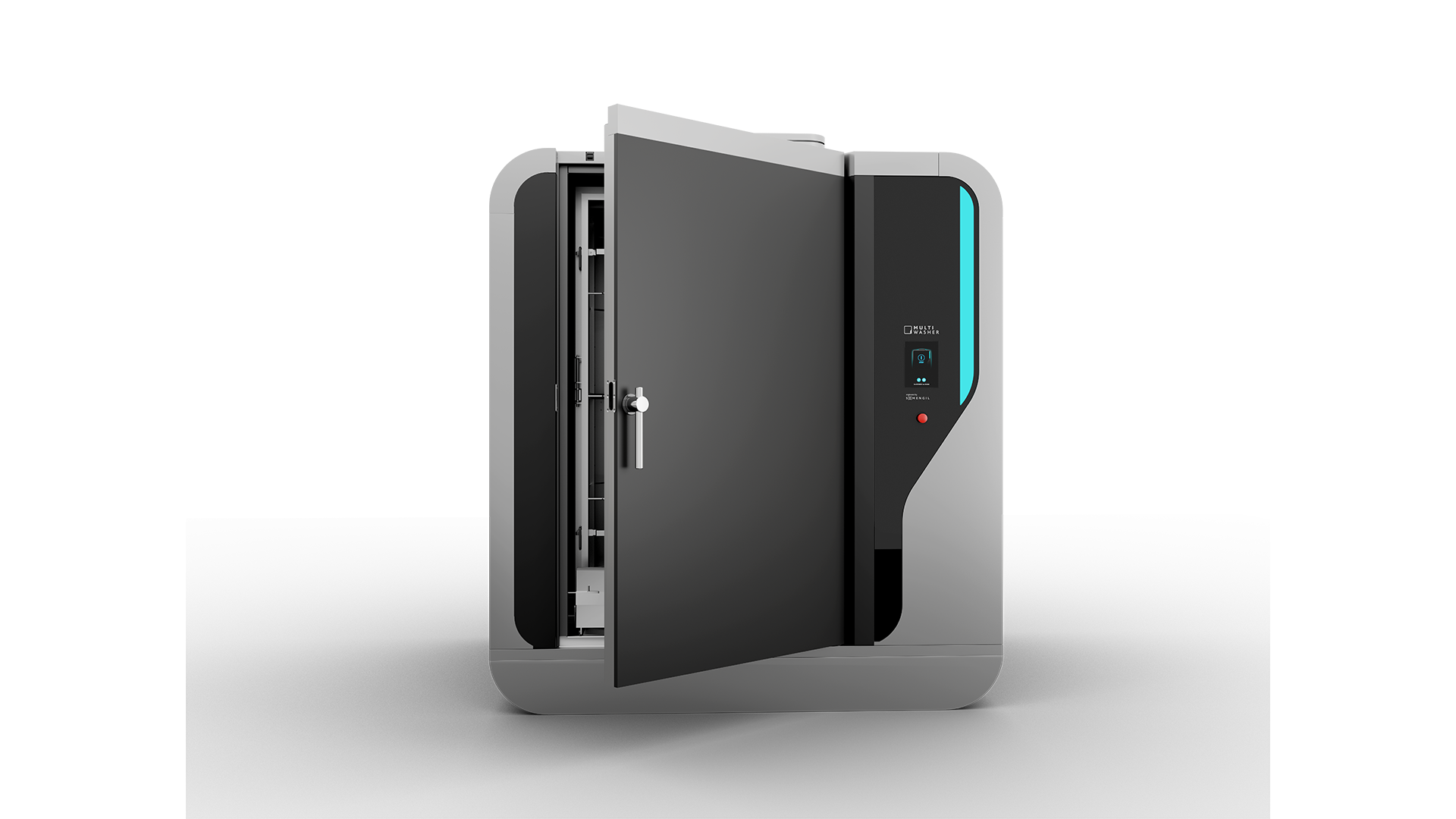Management / Articles
Stock management: 6 tips to control inventory
Waste, delays and lost sales. These are just a few consequences of ineffective stock management. This is how to do it.

 11 minutes of reading
11 minutes of reading
2022-12-02 13:12:20
Waste, delays and lost sales. These are just a few consequences of ineffective stock management. This is how to do it.
“Just Keep It.” This is the answer of some of the world’s largest retailers to the problem of consumer returns. In-store stock has gotten to the point where brands like Target, Walmart or Gap prefer to reimburse consumers and let buyers keep products. These brands effectively pay customers for products, to avoid accumulation in stores.
At the same time, Amazon doubled its storage space during the pandemic in a $6 billion move rooted in over-optimistic sales estimates. When the extra space proved unnecessary, Amazon decide to sublet the space to compensate for losses.
How did it get to this?
In most cases, the reasons could have been easily avoided: from failures in barcode systems, to lack of communication, or even misalignment with the brand’s own demand forecasts. There are, however, complex structural factors: increasingly diversified product ranges, longer and more intricate logistics chains, a greater diversity of sales channels. Stock management is thus more challenging than ever. But what does it mean exactly to manage stock?
What is the stock management?
Put simply, stock management is about monitoring the ins and outs of goods from the company. The goal is to optimize the quantity of each item at every given moment and strike the right balance so that there is no excess or lack of stock. With the right stock management processes, companies can reduce tied-up capital, avoid losses from stock-outs, and reduce chances of having expired or obsolete products. They can improve delivery times, save space and even increase productivity.
Stock management poses three important challenges for any company. First, avoiding having more stock than what you need to fulfil orders. Second, avoiding having less than that. Third, always know the quantity and location of the stock.
Many companies use intuition, memory or manual records to manage all these variables. And while much of stock management translates to simple principles and universal best practices that have helped companies around the world for decades, when dealing with complex operations involving multiple stores, distribution centers and fleets, these methods are no longer effective. Stock management then becomes a nightmarish puzzle that requires the most sophisticated tools. As business grows, it becomes necessary to have more robust and reliable solutions to keep up the pace. Although it is not always possible to predict stock needs in volatile times, companies can (and should) improve management to prevent or mitigate avoidable damages.
6 best practices in stock management
Each industry has its own set of best practices for stock management, but there are some cross-cutting principles that can benefit every business.
1. Choose a stock management method
There are several stock management approaches to inventory management, such as the ABC Analysis, FIFO (First In First Out), LIFO (Last In First Out), or Minimum Order Quantity to name a few. The first step is to define which is more suitable for your industry.
For example, an ABC Analysis helps to organize stock into different tiers. “A” products are the most priority and should be monitored more closely. These products are sold often (usually representing around 80% of sales) and in large quantities (e.g. every day) so they should have higher replacement frequency. “B” products have average priority, and can should be checked on a less frequent basis, say monthly. Finally, “C” products have little sales volumes and frequency, receiving a low priority grade. This form of organization can apply to different variables, such as a sales in value or quantities, shipping frequency, vendor lead-time, or even occupied space. Dividing large stocks in this fashion helps teams focus their energies on the products that are most important to the business.
2. Optimize picking processes
Picking, the preparation of orders for shipment, is one of the most time-consuming activities in a warehouse and essential for effective stock management. Optimizing this task it is key for overall productivity, as it allows orders to be prepared closer to shipping deadlines. To do so, start by drawing a layout of the space. Top selling products (category A, in an ABC Analysis) should be stored in a location closer to the exit point. Use barcodes on each product to facilitate counting and deduct outgoing items once they are shipped. This method allows for automatic tracking of stock, meaning it is possible to know where each item is in real time. In addition, keep the spaces well organized, clean and ordered.
3. Track batch numbers
Using batch numbers is an effective way to track goods. A batch is a set of products which have been produced at the same time and with the same raw materials. With a batch code, it is possible to track all the products that make up the batch from the start of production until delivery.
Thus, you can easily identify the origin and the different steps that a product goes through. It is a simple way to identify critical points along the supply chain and access the quantity and location of each product at any given time.
4. Set a safety stock
The safety stock defines the minimum amount you should always have at hand to protect stock against market instability and fluctuating delivery times from suppliers. It is a good stock management best practice that allows companies to face unexpected spikes in demand, unforeseen stock-outs or inaccurate forecasts.
There are several ways to calculate the safety stock for an item, but one of the simplest and most universal is to define how many days of stock you would need if suppliers suddenly stopped delivering. Say your business would like to have enough stock for 7 days of sales even if suppliers fail. To know the stock that this represents, just multiply it by the daily unit sales.
Safety stock = Quantity sold per day X Number of days of safety stock
5. Use a formula to calculate the reorder point
Trusting mathematics is a good way to avoid the risks of intuition and memory. Use a formula to calculate the reorder points for each item, which tells you when to place a new order with suppliers. Reorder points act as a safety net against supply and demand volatility, especially poignant during holiday seasons, and periods of inflation.
The formula helps you place buy the right amount, consistently. To calculate this point, you must first know the average delivery time of each supplier, measured in days from the time you place an order until it arrives at the warehouse. Imagine it’s eight days: you’ll need enough stock to cover that period, so multiply the daily sales by the number of days. To calculate the reorder point, simply add the safety stock from the previous step:
Reorder point = Average daily sales in units x (Average delivery time in days + Safey stock in days)
So what does this mean? Say you sell 200 units per day of one product. Say your supplier has a lead time of 8 days (from the moment you order until they deliver). Finally, imagine you set a safety stock of 7 days. The reorder point would be 200 units x (8+7 days) or 3,000 units. This means that whenever the stock falls below this amount, a new purchase order should be issued. The quantity to order is the difference between the current stock and the reorder point, which will be enough to get stocks back to its initial state, of 3,000 units. If today the stock is of 1,000 units, the order quantity would be 2,000 units. Why? Because that’s enough to operate until that order arrives.
6. Automate stock management
These days, automation makes stock management calculations much easier, saving effort, time and resources–and reducing mistakes. The help of a software is essential to find and maintain your ideal stock levels.
A good stock management program should allow categorization by attributes, product location and access availability in each channel, market or region. It should also allow you to set precise reorder points and offer advanced pre-order and pending order features. Real-time reporting is important for improving stock forecasting, communicating seamlessly, and managing large volumes.
Stock management is essential to reduce costs, increase margins and improve customer satisfaction. To assist customers in their journey towards operational excellence, Somengil has developed MultiWasher, a state-of-the-art industrial washing machine that sanitizes any type of utensils. This equipment is already improving washing processes in various industries, such as retail, healthcare, catering, logistics and many other activities where hygiene is a critical success factor. See it for yourself in a live demonstration.
You may also like

Management / Articles
Stock management: 6 tips to control inventory
Waste, delays and lost sales. These are just a few consequences of ineffective stock management. This is how to do it.
Posted in 2022-12-02

Management / Articles
FMEA analysis: what it is, what it’s for and how to implement
FMEA analysis allows companies to detect critical failures before they happen. But what is it exactly and what are the major benefits for your or...
Posted in 2022-04-21

Management / Articles
DMAIC: what it is, what it is for, and how to use it
Reduce waste, solve problems, and improve processes. Learn about the DMAIC method and find out how to implement it in practice.
Posted in 2023-03-30






















 Portugal
Portugal United Kingdom
United Kingdom United States
United States France
France Spain
Spain Germany
Germany Romania
Romania Italy
Italy Czech Republic
Czech Republic Finland
Finland Hungary
Hungary Slovakia
Slovakia Greece
Greece Lithuania
Lithuania South Korea
South Korea Russia
Russia Saudi Arabia
Saudi Arabia Poland
Poland Brasil
Brasil Hebrew
Hebrew